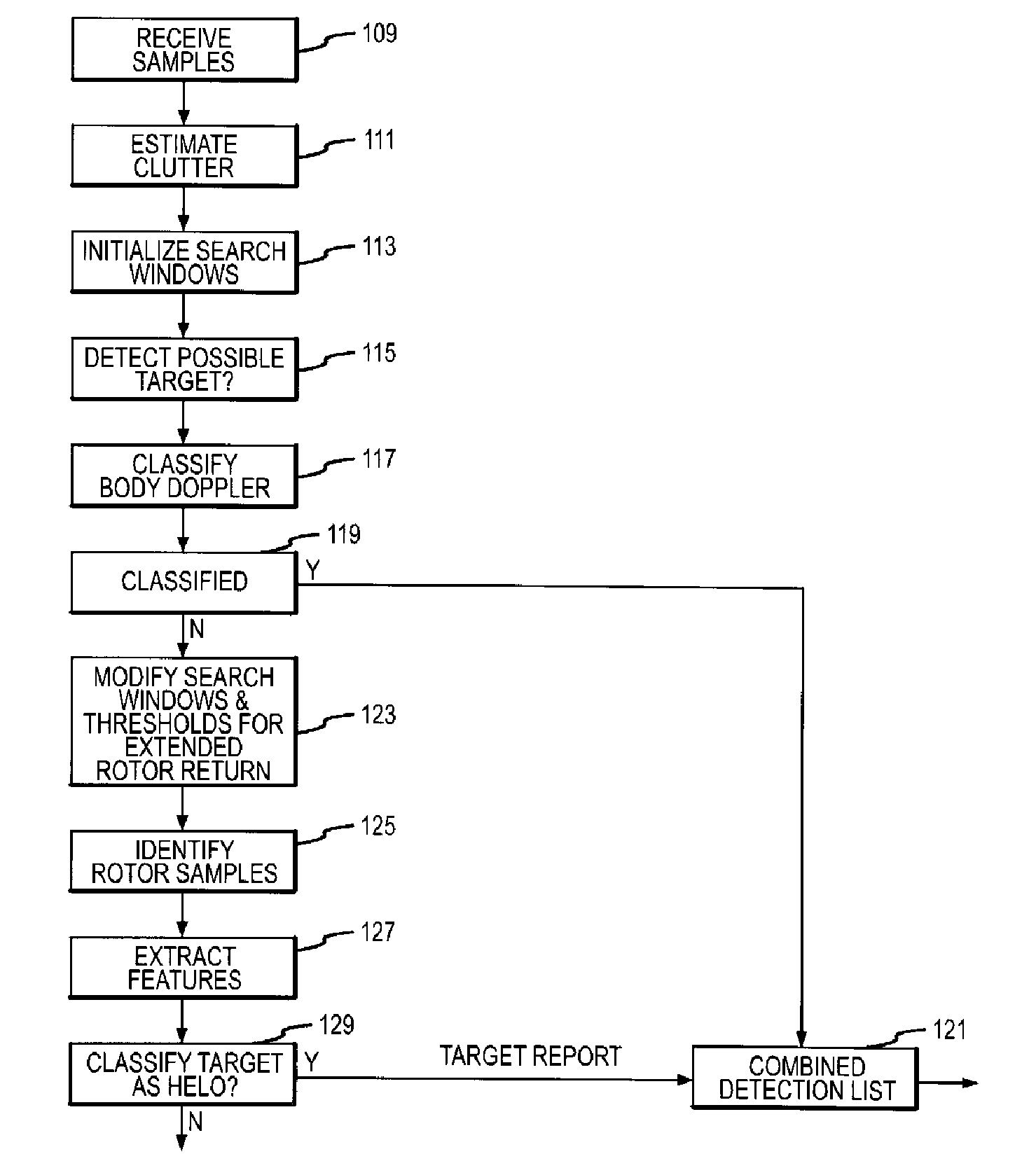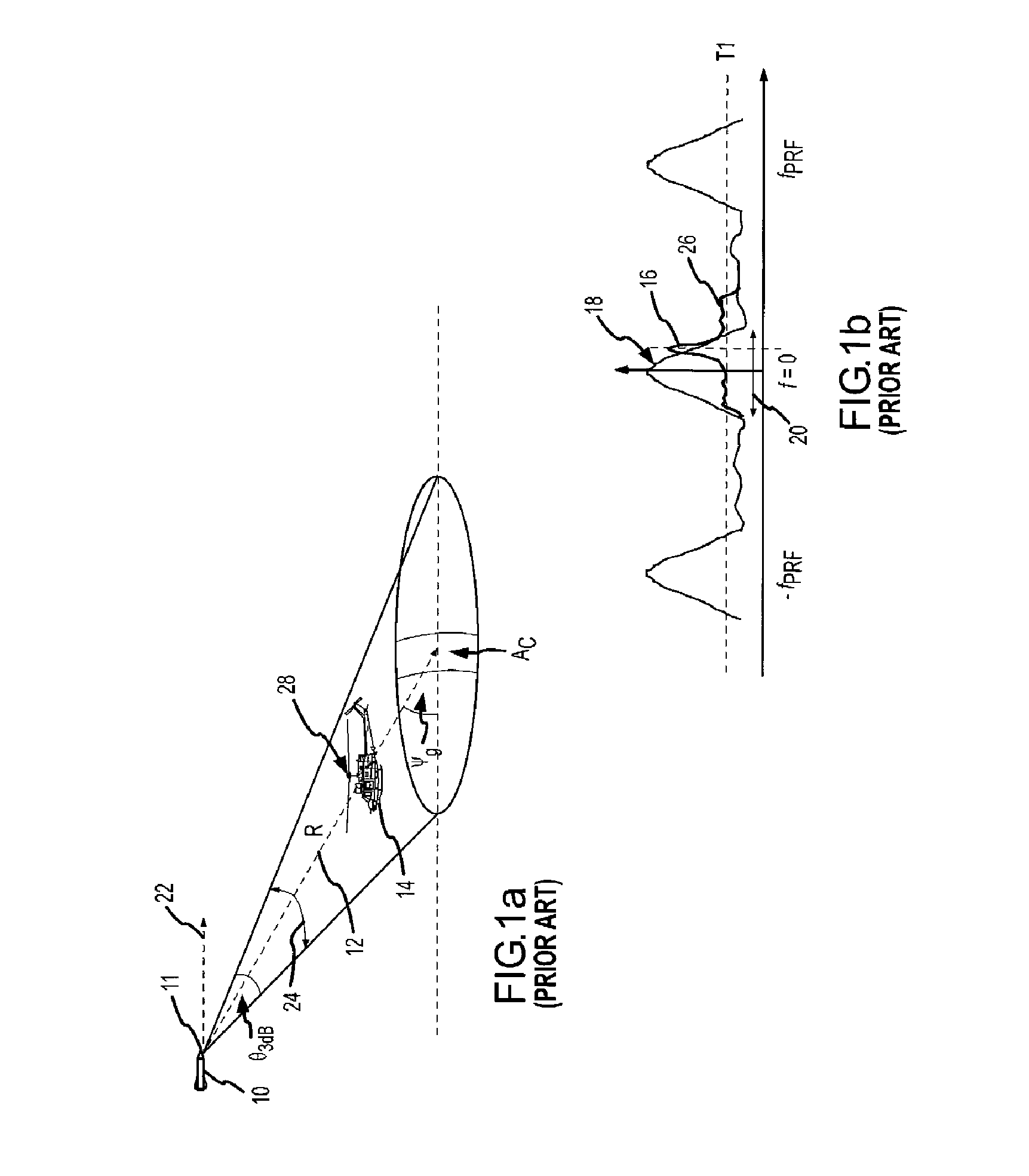Airborne Look-Down Doppler Radar Tracking of Hovering Helicopters using Rotor Features
- Summary
- Abstract
- Description
- Claims
- Application Information
AI Technical Summary
Benefits of technology
Problems solved by technology
Method used
Image
Examples
Embodiment Construction
[0024]The present invention describes a system and method for detecting and classifying slow-moving and hovering helicopters from a missile's look-down Doppler radar that is compatible with the existing base of Doppler radars. This approach uses definable attributes of a helicopter rotor assembly and its extended Doppler rotor return to (a) differentiate “rotor samples” from other samples, (b) extract features such as bandwidth activity, angle, and shape from the rotor samples, (c) classify a potential target as a helicopter or other based on the extracted rotor features and the known attributes of the helicopter rotor assembly. Once classified, a target report including a helo classification tag, range, range-rate and angle is suitably passed to the tracking processor.
[0025]As shown in FIG. 2a, a typical two-bladed helicopter rotor assembly 40 provides a helicopter with the power necessary to rotate main rotor blades 42, generate lift and thrust, and to move laterally, turn, and ch...
PUM
 Login to View More
Login to View More Abstract
Description
Claims
Application Information
 Login to View More
Login to View More - R&D
- Intellectual Property
- Life Sciences
- Materials
- Tech Scout
- Unparalleled Data Quality
- Higher Quality Content
- 60% Fewer Hallucinations
Browse by: Latest US Patents, China's latest patents, Technical Efficacy Thesaurus, Application Domain, Technology Topic, Popular Technical Reports.
© 2025 PatSnap. All rights reserved.Legal|Privacy policy|Modern Slavery Act Transparency Statement|Sitemap|About US| Contact US: help@patsnap.com



